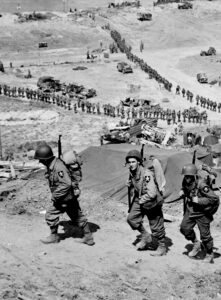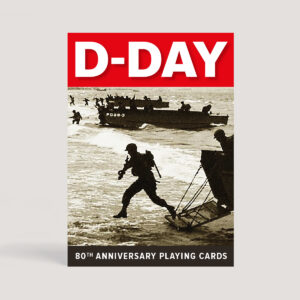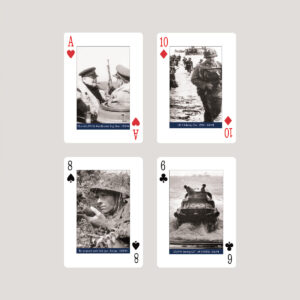‘People of Western Europe. A landing was made this morning on the coast of France…’
Gen. Dwight D. Eisenhower Allied Supreme Commander OVERLORD, evening of June 6, 1944
 AN OPPOSED LANDING is one of the most hazardous military operations. Ike’s laconic words hid the complexities, agonising decisions, years of planning and deception that lay behind the invasion, the ‘longest day’ as Rommel called it.
AN OPPOSED LANDING is one of the most hazardous military operations. Ike’s laconic words hid the complexities, agonising decisions, years of planning and deception that lay behind the invasion, the ‘longest day’ as Rommel called it.
On D-Day 150,000 men were carried by some 7000 ships to liberate France and Europe from Nazi tyranny, and open a Second Front. 30,000 parachutists jumped in the early hours of June 6 to seize crucial bridges and exits, and cut off the Cotentin Peninsular. The French Resistance, prompted by coded wireless messages from London, sabotaged rail and telephone links. D-Day was a near run thing, and but for a break in stormy weather – and Ike’s decisiveness – might have been postponed for 2 weeks, compromising security and morale. Meticulous preparation by the Land Commander, General Sir Bernard Montgomery, and particularly by Admiral Sir Bertram Ramsay in charge of the sea operation (‘Neptune’) prevailed, but stiff German resistance on the cliffs above the American OMAHA BEACH nearly led to disaster. There were 3000 Allied casualties on June 6, 1000 at OMAHA.
The heavy German guns that were supposed to destroy the invader were obliterated by naval fire. Allied deception (‘Fortitude’) and German command confusion fatally delayed German armour, which failed to punch a decisive hole in the Allied line. Gradually the Allies, mainly American, British, Canadian, Free French and Polish on the ground, won the war of attrition. The Battle of Normandy cost Germany 450,000 men, killed, wounded and captured.


